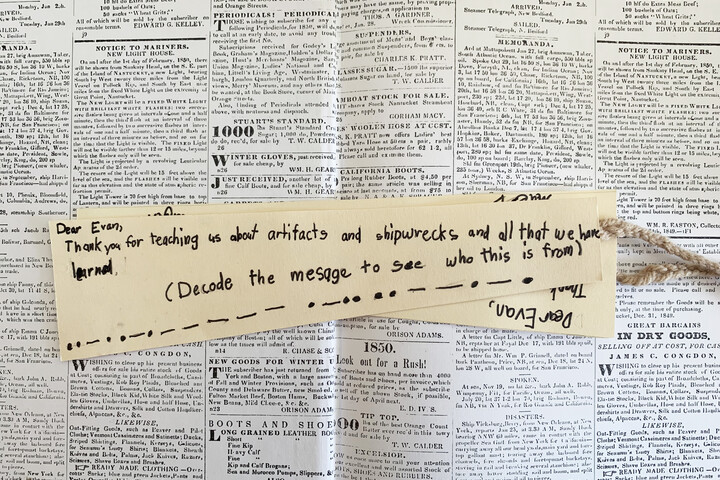
Engaging with Lifesaving History, Nantucket New School Students Wrap-up Museum Program with Sea of Opportunities
By Evan Schwanfelder, Manager of Maritime Education
The Nantucket New School 3rd grade just completed a very well received four week unit on Nantucket shipwreck and lifesaving history utilizing the Museum as an interactive classroom space. Part of Egan Maritime's Sea of Opportunities school collaborations, the main goal of the program was to bring this history alive such that students could interact with artifacts from the collection and share their experience with their peers. Furthermore, students engaged in activities that were designed to replicate the essential drills which lifesavers on Nantucket performed every day.
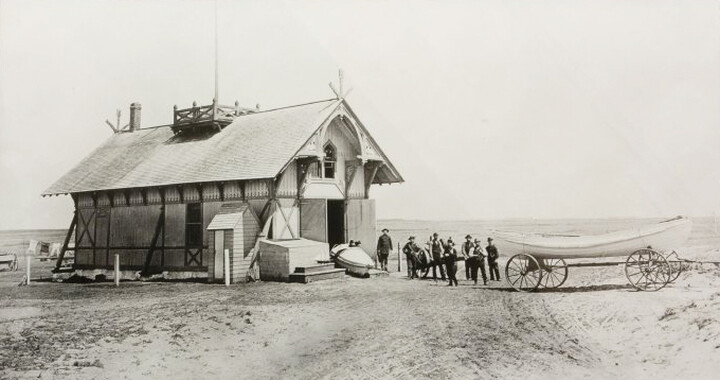
The Surfside Life Saving Station, built in 1874.
Students learned how to properly coil and throw hand lines, haul a replica beach cart and set up a simple breeches buoy. On the last day this culminated in a Lifesaver Olympics style event in which the students, in small groups, were timed as they moved through an obstacle course that was both fun and challenging. The main message was to show just how much physical work these lifesavers did on a daily basis and how, by constantly practicing these skills, the surf men of the Lifesaving Service were able to perform super human acts of bravery and courage from shore and on the water.
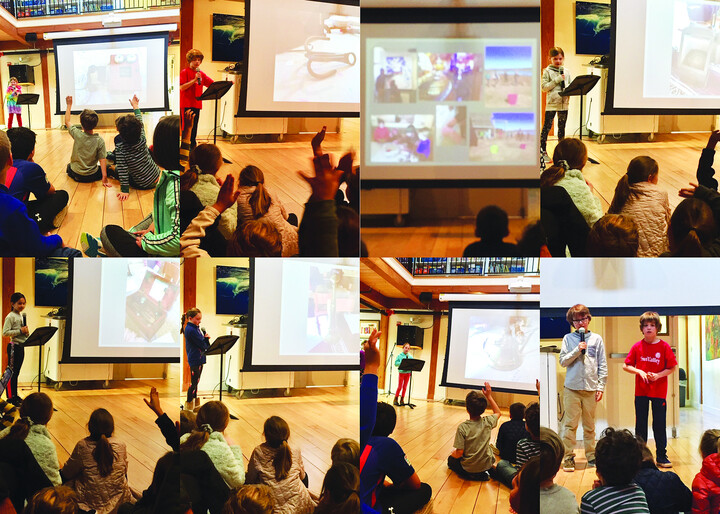
New School students present their Museum artifacts at an all-school assembly.
In addition to learning about the physical skill set, the students also partook in a comprehensive artifact discovery lesson based on the Smithsonian Institutes guidelines for artifact handling and interpretation. Each student was given an object from our collections that told a unique story of Nantucket’s lifesaving history. Cotton gloves were distributed and guidelines were set forth that broke down proper handling procedures. Some points that the kids took away: always assess the object with your eyes first, make sure that the objects are on a padded and stable surface, be aware of areas that are damaged when handling the objects and do not over manipulate parts that look worn or are extremely delicate. Once briefed on the basics, students assessed the composition of the object, what was it made of? They looked at any writing or markings, they were asked to try and describe it as if they were talking to someone who has never seen such a thing before, and they were asked what they thought the possible uses were and how the objects might connect to the story we tell at the Museum.
The students did a fantastic job assimilating the information. We then talked about what the objects were so the kids could take the information back and show the entire school what they learned from their experience.
It is our hope at Egan Maritime to bring more students to the Museum so they can truly become a part of this rich and fascinating history, and down the road, as we visit them in older grades, we can create a large cohort of island youth that find their own stories to tell with the primary sources we have available. We want them to become the owners and curators of all the stories that have yet to be told.
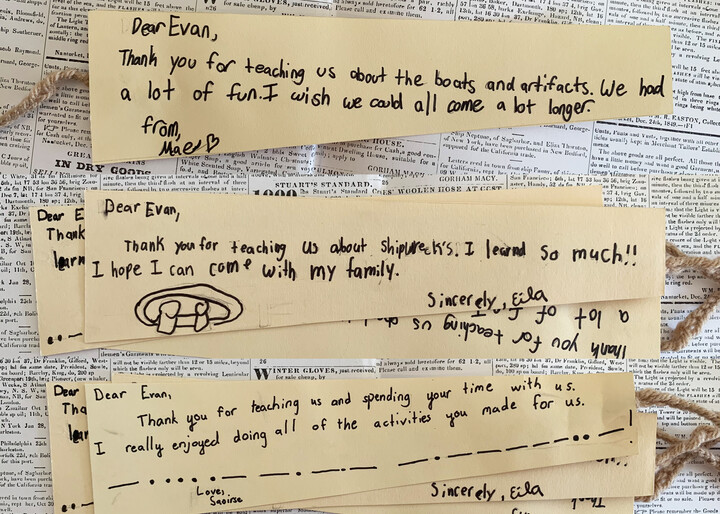
Notes of gratitude from the students to Schwanfelder.
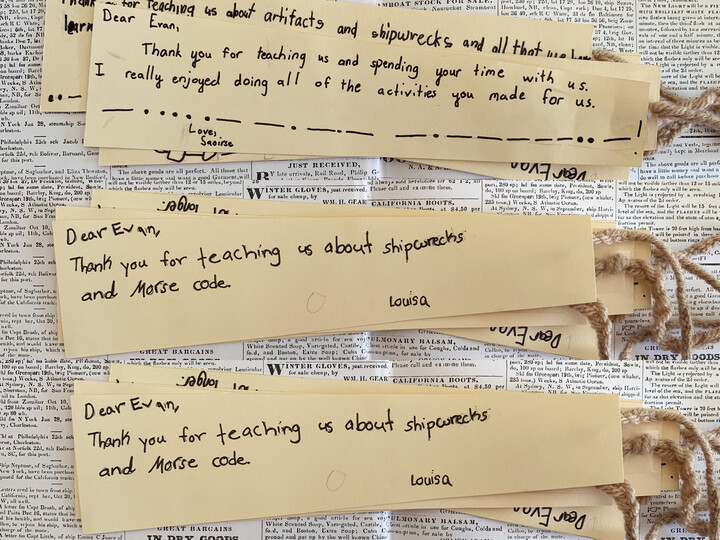

Making Waves
Egan Maritime is proud to thank the Nantucket Golf Club Foundation for making the Sea of Opportunities school collaborations possible. The Foundation is helping educate island youth, and inspiring and informing the next generation of Nantucketers. We are truly grateful to them. Their support, in every way, makes a wave of difference.
